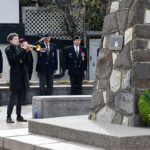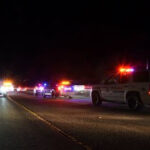Home »

Understanding our wildfire situation
The summer is meant for carefree vacations, lazy days at the lake or a casual hike through the forest. But as we are witnessing the evacuations in the Okanagan and the Cariboo the spectre of wildfire hangs over our heads here in the Kootenays. Low levels of precipitation and warm temperatures have dried up our forests and here we sit on pins and needles wondering what Mother Nature has in store for us.
Kimberley has been proactive in its work to give us a fighting chance, or at least some time to allow us to seek safer ground if a large scale wildfire threatens our from outside of our boundaries. Kimberley Fire Department, with the support of our council, funded by the Union of B.C. Municipalities, and under the advice of fire ecologists, have worked to reduce the interface fuels that pose us the most threat. The support of the user groups in these areas has been excellent and this work is continuing, even though the scale of this task is immense.
B.C’s Wildfire Service continually advises us of potential threats to the community and has committed to prioritize resources for fires that may threaten populated areas. Yet, fires of massive scale are difficult, if not impossible to contain. There are times when under the advice of the Wildfire Service, populated areas must be evacuated. For this reason we must ensure that we are prepared for that day, even though it may not come.
Preparation for evacuation occurs at many levels. Planning for residents, businesses, schools, industry and local governments well ahead of a disaster is required. The City of Kimberley works hand-in-hand with the Regional District of East Kootenay, and both governments have plans that are interconnected. Hazard assessments, pre-incident plans, mitigation plans, and post-incident plans have been developed and are continuously reviewed.
In the event of a large scale wildfire threatening our community, Wildfire Management would most likely be the lead agency. Their fire behaviour specialists would be estimating the fire’s intensity, direction and speed. Then on their recommendations our plans would be put into place. Evacuations would be the probable course of action. Through various channels, directions would be given to our population on where to go and what to do. The agency tasked with evacuating our community would be the RCMP and they would recruit other agencies such as Search and Rescue to help carry out the evacuation plan.
Within city boundaries our Fire Department is capable of handling small-scale fires of category one or two. Beyond that we call in the Wildfire Service to assist us with the operation. In this circumstance we would be operating as a unified command system and their expertise would guide our actions. We are fortunate that our forested areas are well traveled and there are many diligent users that act as the eyes and ears of our community. Early detection and quick responses have saved us from more than our share of potential disasters.
If an incident is large scale they are managed in command posts. The command post is where the incident commanders and their teams coordinate the operational efforts of the responders. That is where you will find the wildfire management teams, fire chiefs, and other specialists. Most incident command posts are located in an accessible area near the incident.
The incident command posts are supported by an Emergency Operation Centre (EOC), usually located regionally. For Kimberley it is located in the Telus building downtown Cranbrook and alternate locations are available. These EOCs are typically staffed by trained local government employees. For instance, our Chief Financial Officer may be the Finance Section Chief and would approve and process expenses while our Chief Administrative Officer would be the EOC director coordinating the overall support effort. Additionally the EOC is the communication hub by providing updates and information to the public, political bodies and other agencies.
If the event scale grows to a level that the local EOC requires support, the Provincial Regional Emergency Operations Centre (PREOC) will be activated. This PREOC is staffed by trained Emergency Management B.C. personnel. One level above the PREOC is the Provincial Emergency Coordination Centre (PECC). The PECC is currently activated due to the fires in the province.
Section 12 of the Emergency Program Act allows Local Authority, or head of a Local Authority (Municipal Council or Mayor; or Regional District Board or Chair) to declare a State of Local Emergency if extraordinary powers are required to deal with the effects of an emergency or disaster. This will be occurring if is determined that there is an imminent threat to the community. At that time there would be requests for resources such as structural sprinkler units, additional structural firefighting equipment and personnel. These resource requests would be filled subject to availability and most people can understand, will be difficult to get
During any event there are guiding principles that will always be followed; provide for the safety and health for all responders; save lives; reduce suffering; protect public health; protect government infrastructure; protect property; protect the environment; and educe economic and social losses. These principles are built into the fabric of our plans.
As we look forward to the remainder of the summer and the possibility of more dry hot weather we will continue monitor the situation around us. We ask that the community prepare for an emergency while remaining diligent and responsible.
Lead image: Kimberley Fire Department members battle a bush fire earlier this summer. Kimberley Fire Department photo
– Rick Prasad is City of Kimberley Fire Department Fire Chief








